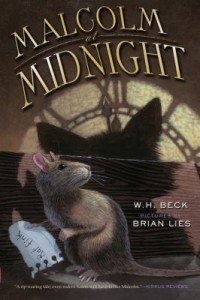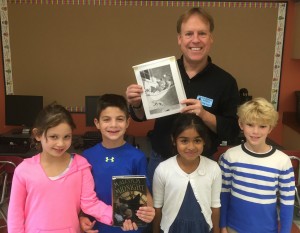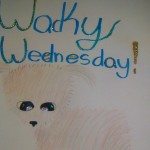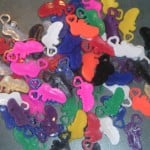 We have been reading Malcolm at Midnight by W. H. Beck and illustrated by Brian Lies, in our book group. During our 8 weeks of working with Mrs. Chase, our Librarian, Brian Lies came to visit with all of the 2nd grade students [Thanks to our wonderful Dover PTO!]. We had an opportunity to talk with Mr. Lies during his visit and ask him some questions. We hope you enjoy getting to know Brian Lies, author and illustrator extraordinair!
We have been reading Malcolm at Midnight by W. H. Beck and illustrated by Brian Lies, in our book group. During our 8 weeks of working with Mrs. Chase, our Librarian, Brian Lies came to visit with all of the 2nd grade students [Thanks to our wonderful Dover PTO!]. We had an opportunity to talk with Mr. Lies during his visit and ask him some questions. We hope you enjoy getting to know Brian Lies, author and illustrator extraordinair!
Q 1: Which do you like to do better, write the story, illustrate the story or illustrate your own stories? Why?
Brian Lies shared, publishers usually choose the illustrator for a book, the author doesn’t have any say in who illustrates their story. He likes to be both author and illustrator because it allows him to change words and/or pictures as the story develops.
Q 2: What is your process for writing a book?
He starts with an idea. The process is “messy” and not easy. His imagination gives him some words and pictures. When he is drawing, words sometimes come to him and he writes them down. He ends up with a collection of words and pictures and then tries to make them match. So you can see how he thinks it is a messy process.
Q 3: How do you come up with the ideas for your books?
The best ideas come from real life experiences. He writes about what he likes to do and knows the best. For example, riding a horse – you know how it feels to ride the horse and the movement of the horse, so it makes it easy to write about that.
You can write about the world around you, for instance, he looked around the room and noticed an air vent. He came up with this story about a person who did something so bad that he got stuck in the air vent. Or he noticed the rug in the room and thought it was much smaller than the room. It made him think maybe a secret door was hidden under the rug where teachers kept chocolate.
Authors and illustrators use their imagination to help create their stories. A writer/illustrator needs to be a “noticer” and ask how can I use this ‘thing’ in a story, such as the air vent. You need to teach yourself to think and ask questions about everything.

Q 4: What is your process for illustrating your books?
Mr Lies says the first part of the process for illustrating books is coming up with the ideas for the pictures. For chapter books he reads the book once for fun then he’ll read it again with a blue pencil. He will circle what he wants to draw. After Mr Lies goes in with a blue pencil, he reads the story again and asks himself how does the story flow? In the slow, boring parts, he will add illustration to make it seem more interesting. He may read the story up to six times to make sure he gets the details correct. Then based on what he knows he’ll begin sketching his picture ideas. This is how Mr Lies comes up with the ideas for illustrations.
Q 5: Why did you choose to illustrate Malcolm at Midnight and Malcolm Under the Stars books?
When asked by his editor to illustrate Malcolm at Midnight and Malcolm Under the Stars, Mr. Lies said that he really wanted to focus on writing his own stories instead. The editor asked him to just read the books. Mr. Lies read the books and loved them. The books felt so much like the favorite stories he loved as a boy like Cricket in Time Squares and Mrs. Frisby and the Rats of Nimph. He really loved the characters and the many exciting adventures Malcolm experienced during the story. He felt sorry for poor Malcolm and his troubles. It made sense for Mr. Lies to illustrate the books.
Q 6: How do you choose the scenes to illustrate in Malcolm at Midnight?
When he is reading the story, he is thinking about what the story looks like in his mind. He keeps two things in his thought while he reads the story.
- The scene is so cool, he just has to draw it!
- Make sure the illustrations are evenly spaced throughout the story.
So he looks carefully at the words, to see what would be the mostly interesting to illustrate. Then he looks for something to draw, in order to carry the reader forward in the story. Finally, Mr. Lies really wants to make sure his illustrations smooth out the reading experience for the reader.
Q 7: What kinds of research do you have to do to illustrate the Malcolm series?
These are the kinds of research Mr. Lies needs to do to illustrate the Malcolm series. There are a lot of animals in his books. He keeps a cabinet filled with pictures of animals. Mr. Lies pulls out a picture to look at the shapes and differences between the animals. Malcolm looked in the book like he was a bit mousey even though he is a rat because in Malcolm at Midnight, the teacher and students thought Malcolm was a mouse. W. H. Beck, the author, has a blog. Mr. Lies sneaked around the web like Malcolm sneaking around at night. He found the blog sneaking around on the web. He uses it for looking at pictures that W. H. Beck recommended to him. On the web, he found pictures of the school [McKenna]. His illustrations of the hallway were similar to the pictures. Mr. Lies also found a website of the actual school. He wanted to know where the rooms were located but some of the author’s words were confusing. So she sent him a drawing of the school. It was a map of a real school she knew. She marked up the ‘kindergarten room’ and Amelia’s classroom on the map. It was his first time talking to an author of a book he was illustrating. This is what Mr. Lies has to do to research for his illustrations.
Q 8: What are you working on now? Is it a book you are writing or one you are illustrating?
He is working on a book, which he is both writing and illustrating. The main character of the book is a fox who experiences sadness. The format of the new book is a picturebook. The ‘working’ title of the book is The Creepy Garden of Evan Foulstitch. Mr. Lies has been told that parents don’t like the word “creepy” in the title so he may have to come up with another option.
His publisher turned down this book because they didn’t like the idea of an animal having an animal for a pet. Mr. Lies is meeting with a new publisher and maybe it will be a ‘yes’. His job is to convince this new publisher, where half the people don’t like the idea of an animal having a pet and half already love the idea.
In the story, fox has a dog for a pet. The dog and fox do everything together. Unfortunately, the dog dies. The fox acts like a human but looks like a fox. Mr. Lies thinks it is a sad but beautiful story. The story shows that you can come out of sadness and be happy again. He wants to draw the illustrations for this story more than he has ever wanted to draw for any book.
We loved the opportunity to meet and chat with Mr. Lies. We are grateful for his generosity of time and information.
Thank you, Mr. Brian Lies, for your words, your art, and your time with us!
Harrison, Mia, Raina and Chase
2nd Grade Guest Reporters
Permission received, from Mr. Lies (who retains the copyright of all his artwork), to use the cover art from the book Malcolm at Midnight.
 Chickering Student Radio
Chickering Student Radio for her students and teachers. After talking with her, we know why she is such a wonderful teacher. We hope you enjoy listening to our chat with Mrs. Welch.
for her students and teachers. After talking with her, we know why she is such a wonderful teacher. We hope you enjoy listening to our chat with Mrs. Welch.













